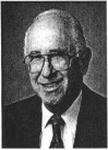版权所有:内蒙古大学图书馆 技术提供:维普资讯• 智图
内蒙古自治区呼和浩特市赛罕区大学西街235号 邮编: 010021

作者机构:Chinese Univ Hong Kong Dept Elect Engn Hong Kong Peoples R China Vivo Commun Technol Co Ltd Hong Kong Peoples R China
出 版 物:《IEEE TRANSACTIONS ON ANTENNAS AND PROPAGATION》 (IEEE天线与传播汇刊)
年 卷 期:2020年第68卷第2期
页 面:838-849页
核心收录:
学科分类:0810[工学-信息与通信工程] 0808[工学-电气工程] 08[工学]
基 金:Research Grants Council of the Hong Kong Special Administrative Region China
主 题:Antenna arrays MIMO communication Capacitors Mobile antennas Mutual coupling Antenna measurements Antenna array data throughput decoupling technique long-term evolution (LTE) multi-input multi-output (MIMO) mutual coupling over-the-air (OTA) test terminal antennas
摘 要:The self-curing decoupling technique is substantially extended to apply to multi-input multi-output (MIMO) antenna arrays in mobile terminals. Using this proposed technique, the mutual coupling between antennas can be reduced by inlaying lumped element capacitors on the ground plane. The decoupling method does not require any physical connection or obstruction between coupled antennas. The significance of the proposed decoupling technique is fourfold: 1) it works for inverted-F antennas (IFAs), monopole antennas, and loop antennas, the most three commonly used antenna forms for mobile terminals;2) the inherent improvement on matching conditions after decoupling;3) the flexibility in implementation owing to its detachment from the antenna body;and 4) the applicability to an array with more than two elements. Four demonstrating examples, including two IFAs, two monopole antennas, two loop antennas, and a MIMO array with four elements of different antenna types are studied by EM modeling, passive tests, and MIMO over-the-air (OTA) measurements. The experimental results show that significant improvements in port isolation (from 9 to 30 dB), total efficiency (from 53% to 69%), and above all, the system data throughput can be achieved. The working mechanism of the method is revealed and justified through the partial element equivalent circuit (PEEC) model in the fifth example.